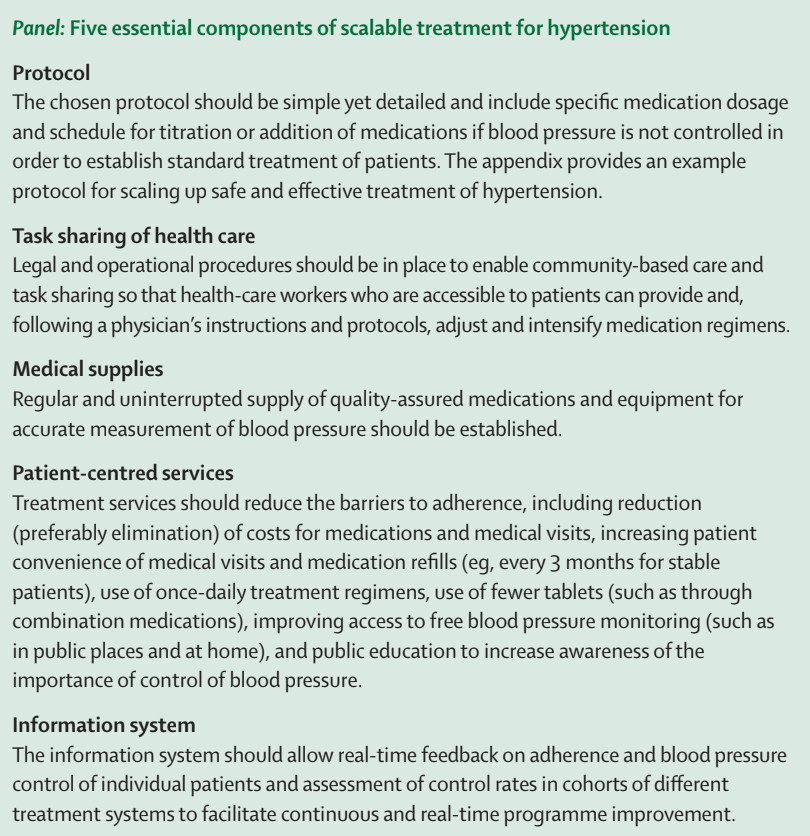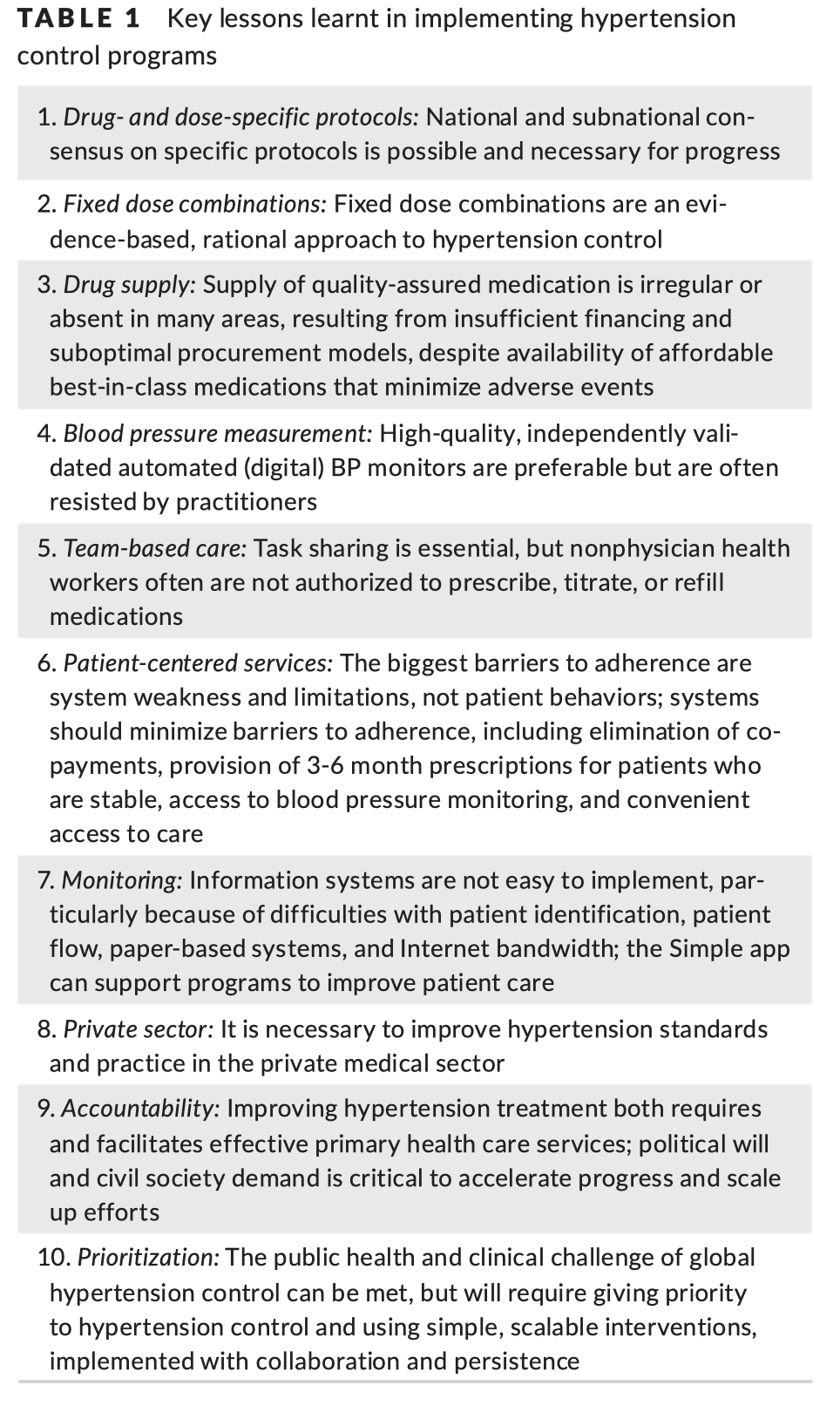Cardiovascular disease is the world’s leading killer, leading cause of health disparities, and the major driver of health care spending.
tomfriedenpublichealth
Tom Frieden
February 2, 2022
https://www.linkedin.com/feed/update/urn:li:activity:6896866849183920128/
uchester
Four years ago, along with Mike Bloomberg, I outlined how to save another 100 million lives from heart attacks and strokes by
- banning artificial trans-fat,
- reducing dietary sodium, and
- managing high blood pressure well.

I discuss here:

Despite being the leading cause of mortality and premature death, cardiovascular disease is largely preventable through simple, inexpensive, but underused actions.
With financial and political capital, there has been substantial progress against HIV infection, malaria, tuberculosis, vaccine-preventable disease, and many causes of maternal and infant mortality.
But of the more than $35 billion the world spends on development assistance in health, less than 1% goes toward prevention of cardiovascular disease.
… of the more than $35 billion the world spends on development assistance in health, less than 1% goes toward prevention of cardiovascular disease.
In addition to tobacco control, three specific interventions — artificial trans-fat elimination, dietary sodium reduction, and effective treatment of high blood pressure — can reduce the burden of cardiovascular disease, and can be implemented now.
About the author
Dr. Tom Frieden is a physician trained in internal medicine, infectious diseases, public health, and epidemiology. Dr. Frieden is now the President and Chief Executive Officer of Resolve to Save Lives, a $225 million, 5-year initiative housed at Vital Strategies, which aims to save millions of lives from cardiovascular disease and make the world safer from epidemics.
Featured article
Frieden TR, Bloomberg MR. Saving an additional 100 million lives.* Lancet.2018;17;391(10121):709–712.
Although tobacco is the world’s leading cause of death, hypertension actually kills more people each year — and more than all infectious diseases combined.
To reduce hypertension, both prevention and treatment are needed. Although weight loss and increased physical activity and adoption of healthier overall diets, can reduce hypertension, these interventions are difficult to scale up for population-wide impact. In contrast, two initiatives — sodium reduction and hypertension treatment — can reduce stroke and heart attack rapidly.
Sodium reduction, along with trans fat elimination, are covered in detail in the Food Policy section of this site. For hypertension treatment, substantial improvement is possible and needed.
The Panel below outlines the five essential components of effective treatment of hypertension.

Five Essential Components of Effective Treatment of Hypertension
Each of these five components requires meticulous attention to detail in planning and execution.
Treatment of hypertension can — and should be — pathfinder for better primary health care. And better primary health care is the most important and most neglected part of our health care system.
Frieden TR, Varghese CV, Kishore SP, Campbell NRC, Moran AE, Padwal R, Jaffe MG. Scaling up effective treatment of hypertension-A pathfinder for universal health coverage. J Clin Hypertens (Greenwich). 2019. 21(10):1442–1449.
This article summarizes lessons learned in the first years of the Resolve to Save Lives hypertension management program, operated in coordination with the World Health Organization and other partners. Hurdles to hypertension control have been identified, with most related to limitations in the health care system rather than to patient behavior. Treatment according to standardized protocols should be started as soon as hypertension is diagnosed, and medical practices and health systems must closely monitor patient progress and system performance.

Hurdles to Blood Pressure Control
Years of intensive work identified these key lessons:

Key Lessons to Implement Hypertension Control Programs
Frieden TR, Coleman King SM, Wright JS. Protocol-based treatment of hypertension: a critical step on the pathway to progress.* JAMA 2014;311(1):21–2.
We advocated for protocol-based treatment early on — learning lessons from tuberculosis, HIV, and immunization programs. Standardization makes quality improvement possible. It’s sometimes criticized as “cookbook medicine,” but this is a misguided critique. The best health care systems, including Kaiser-Permanente in the U.S., use protocols. Clinicians can depart from the protocol by simply noting the reason in a few words. Without protocols, there’s far too much of what is euphemistically called “unwarranted clinical variability” — a fancy name for malpractice. Most patients with hypertension, all over the world, are underdiagnosed and undertreated.
Angell SY, De Cock KM, Frieden TR. A public health approach to global management of hypertension. Lancet 2015;385:825–7.
Hypertension is probably the easiest chronic non-communicable disease to treat, since blood pressure measurement for diagnosis and monitoring is simple, drug regimens can be once daily and inexpensive, and treatments exist that do not need laboratory monitoring. However, hypertension is adequately controlled in only about 13% of people with the disorder worldwide.
Frieden TR, Berwick DM. The “Million Hearts” initiative — preventing heart attacks and strokes. NEJM 2011;365(13):e27.

Million Hearts as Launched in 2011
We launched a well-conceptualized initiative to prevent one million heart attacks and stroked in the United States in 5 years in 2011.
Frieden TR, Wright JS, Conway PH. Is rapid health improvement possible? Lessons from the Million Hearts initiative. Circulation. 2017;135(18):1677–1680.
Despite a lot of hard work and some important progress, the sad answer to the question asked by the title of this article has been: “Yes, but it didn’t happen.”
Chamany S, Silver LD, Bassett MT, Driver CR, Berger DK, Neuhaus CE, Kumar N, Frieden TR. Tracking diabetes: New York City’s A1C Registry.* Milbank Q 2009;87:547–70.
An ambitious attempt to take a public health approach to diabetes care in New York City, based on mandatory reporting of A1C levels. Despite extraordinary effort, the impact was minimal. I don’t regard this as a failure, but as a successful attempt at something that needed to be tried. Public health — and I — learned a lot, and some patients benefited. People with diabetes are at much higher risk of serious complications. Controlling their blood pressure, treating them with statins, and managing their glucose can all improve their health — in that order of impact/priority.
Kontis V, Cobb LK, Mathers CD, Frieden TR, Ezzati M, Danaei G. Three public health interventions could save 94 million lives in 25 years. Circulation. 2019;140(9):715–725.
NCBI — WWW Error Blocked Diagnostic
Cardiovascular Health — 100 Million Lives in 30 Years (94 Million in 25 years)
Frieden TR, Cobb LK, Leidig RC, Mehta S, Kass D. Reducing Premature Mortality from Cardiovascular and Other Non-Communicable Diseases by One Third: Achieving Sustainable Development Goal Indicator 3.4.1. Global Heart. 2020;15(1):50.
Took us nearly 3 years to complete this work. It’s one of those amazingly simple questions and it’s ust astonishing that it hadn’t been asked and answered before. The countries of the world all convened and agreed to Sustainable Development Goals. Good. Including control of the leading killers. Even better. Focusing on a 30% reduction of the risk of death from heart disease, cancer, stroke, and chronic lung disease. Great. But a plan or accountability for actually doing so? Nothing. So we outlined what would be needed to reach this ambitious and appropriate goal. The 7 livesaving programs:

Seven Initiatives to Achieve SDG 3.4.1
Kishore SP, Salam A, Rodgers A, Jaffe MG, Frieden TR. Fixed-dose combinations for hypertension. Lancet. 2018;392(10150):819–820.
Fixed-dose combinations can improve adherence to medications and control of blood pressure.
Reprints. Articles marked with * are available by request (all others are open source and available through the links).












